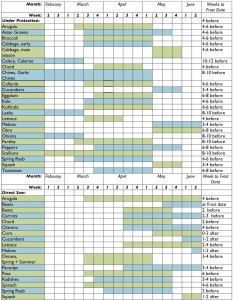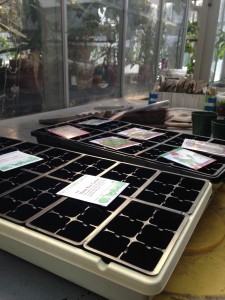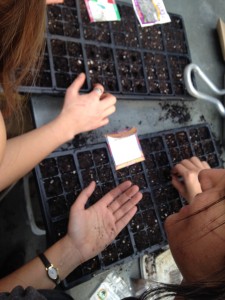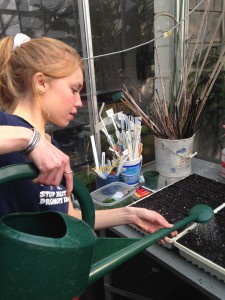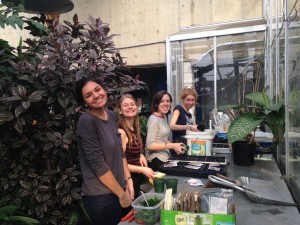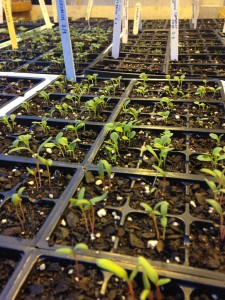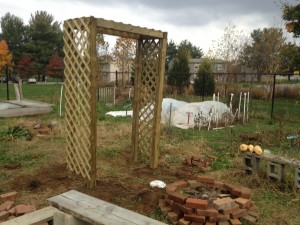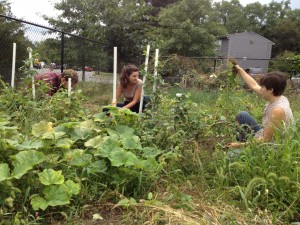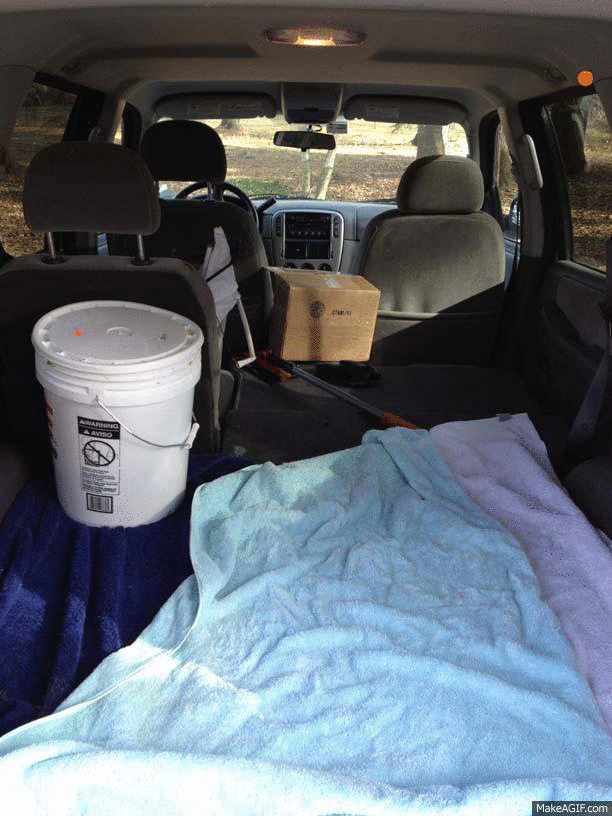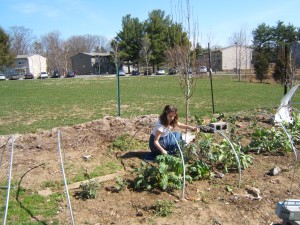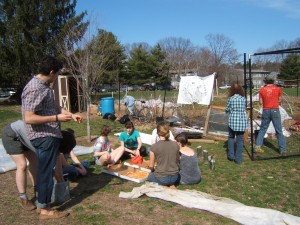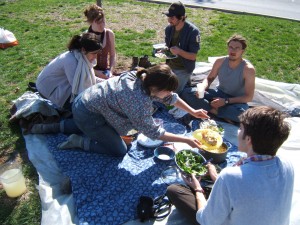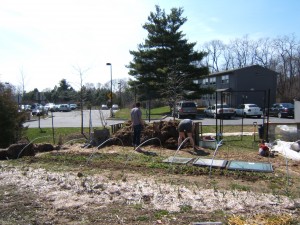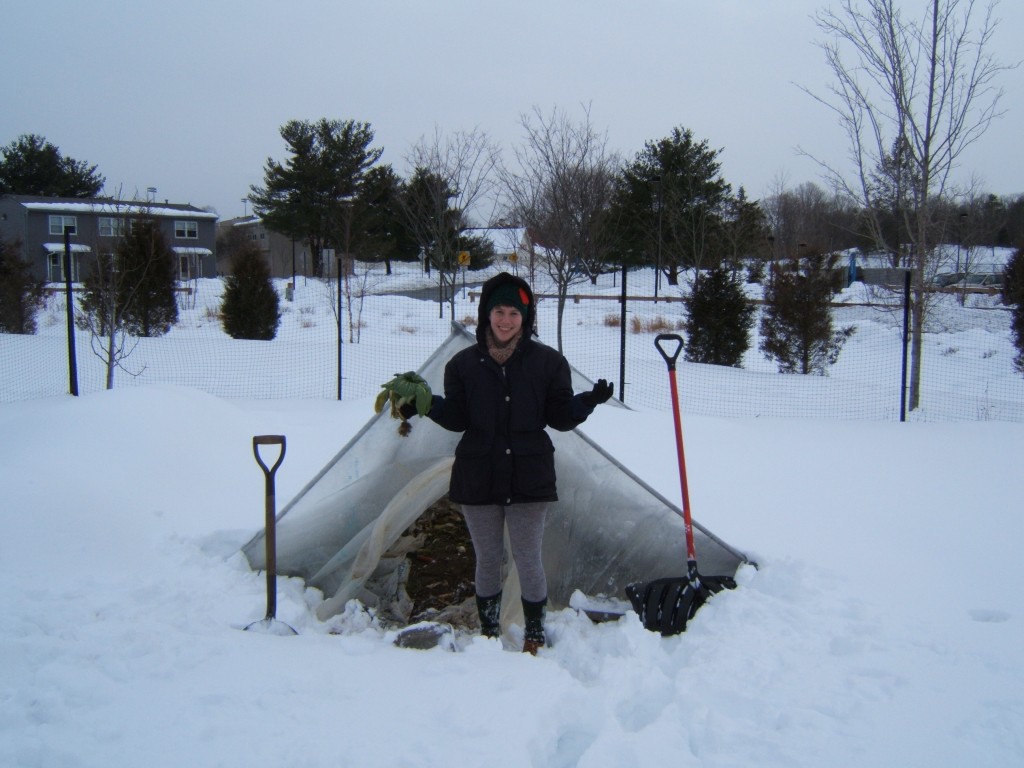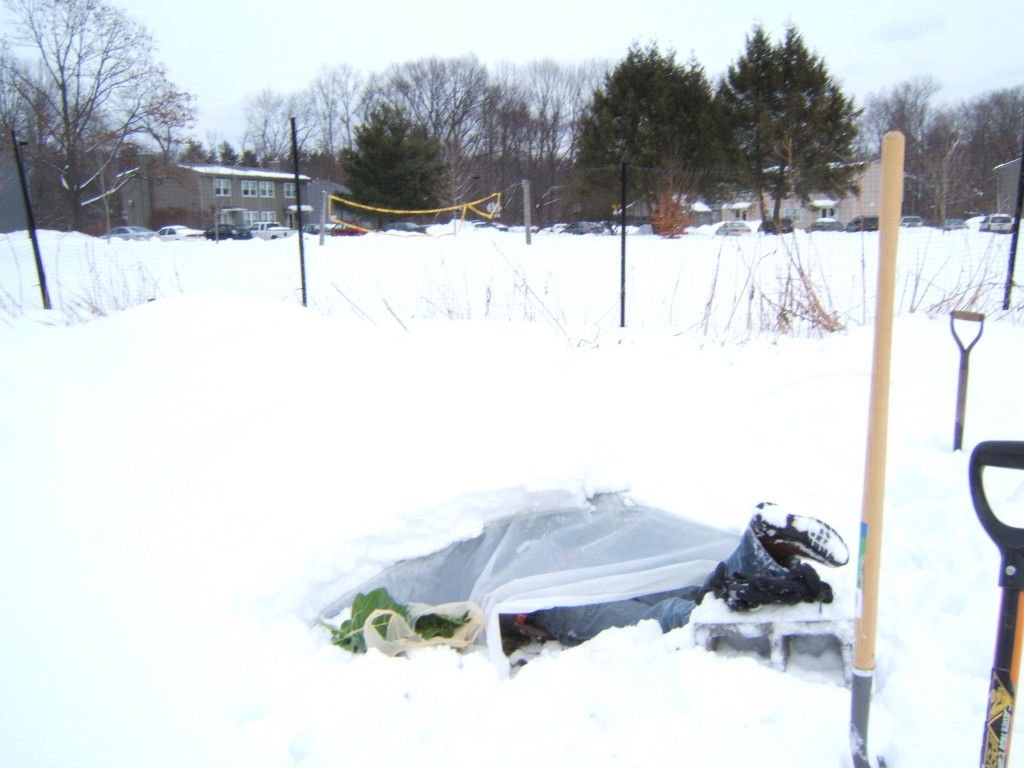Welcome, Spring!
March 24, 2015
Hi there VEG-ers,
Spring has Sprung, so it’s about time we let you let you in on the plans for the upcoming season. The degrees are sure taking their sweet time to get up there, but before we get out to the garden we’ve got a few projects that’ll keep us busy.
First up, SPROUTS! That’s right, come join us for a sprout planting session and we’ll provide you with everything you need to start your very own tasty, nutritious and fabulously easy lil veggies. Seeds, jar, water, and we’re set. In case there’s any confusion as to what we’re talkin about, peep this:
 yum
yum
Next on the roster: Birdhouses! Pretty self-explanatory. We will have the materials to build and paint some abodes to welcome our winged friends to the garden.
 (maybe not this extreme)
(maybe not this extreme)
We’ll also be starting some seedlings in the greenhouse, that we’ll plant in the garden later in April. GET PSYCHED.
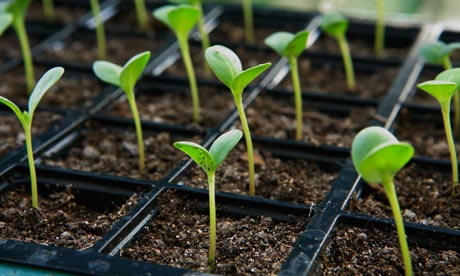
We’re also gonna be starting some window boxes to furnish the dorms with. Fresh herbs!
Lastly, ~DINNER~. You’re invited! Come cook, eat, drink, and be merry with friends–I’ll be sending out an email with the deets, but it’ll be at a TH our first weekend back. Likely on the menu: pasta, roasted veggies, salad, and bevs.
Questions, thoughts? Always feel free to send us an email– veg@vassar.edu
plannin’ for a blooming spring
March 11, 2014
It’s March, and we’ve already begun dreamin’ about the crunch of our blue dino kale sauteed with some fresh onions and garlic. Our seedlings are started, and man are they growin’! We’ve already had to trim back our lettuce so much we made a salad out of it. There’s some broccoli, beets, chives, chard, peppers, tomatoes, arugula, basil, lavender, sage, mugwort (and the list continues) already sproutin’ in the greenhouse, too. Although we’re enjoying Spring Break already, we’ve gotta wait until early May, around the time of the last frost in the Hudson Valley, to get these babies rooted in the tasty soil.
Most of the seeds that we are planting this season come from the local Hudson Valley Seed Library– an awesome homestead-based business started in 2004, whose seed sanctuary is located nearby in Accord, New York. For more info, check out their website (http://www.seedlibrary.org/about-us-hvsl) or their blog (http://www.seedlibrary.org/blog/).
So with all these seedlings on our hands, we’re makin’ sure to have our 2014 garden plan and calendar ready. Here’s a cool chart we can use to guide us with a timeline:
We’re BAAAAACK!
February 24, 2014
How to build an arbor….
October 27, 2012
The fruits (and veggies) of our labor
October 6, 2012
The Vassar Experimental Garden is getting off to a wonderful start this fall!
So far, we have:
- Weeded every nook and cranny of the garden
- Planted seeds for season extension
- Installed cold frames and hoop houses
- Labeled the beds with adorable signs
- Constructed a new compost receptacle
- Organized and cleaned our tool shed
- And of course, harvested a delicious bounty of herbs, butternut squash, bell peppers, eggplant and tomatillos.
Whew!
Remember–everyone in the Vassar community is invited and encouraged to help out!
We work in the garden every Saturday from 2-5 PM. VEG is located in the round grassy patch of the THs. Hope to see some new faces there!
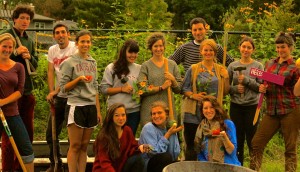
Great turnout for a very productive workday. VEG alum and previous leader Logan Nelson graced us with his presence--what a treat!
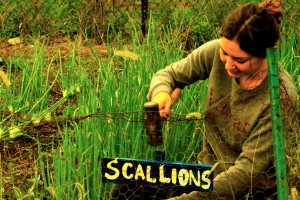
Monica installs one of our brand new hand made signs. These will make harvesting from the garden a piece of cake for students living in the THs.
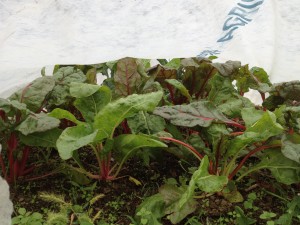
Look what's hiding under a row cover...swiss chard! Hardy and healthy with the right season extending technique.

Cold frame in place and ready to plant. Group works together to make more compost bins. We'll have quality, nutrient rich soil in no time.
Thanks for the photos, Cat!
Compost!
April 1, 2012
We here at VEG are proud to announce our new town student compost program! We’ve provided willing off-campus students with buckets, instructions, and a weekly pick-up service. Our soil will be rich and nutritious in no time!
spring round-up ready
June 1, 2011
hoop (house) dreams
June 1, 2011
Depending on how the summer crew has fared, we usually start with a clean-up day- weeding the garden, throwing out broken equipment and other detritus, turning the compost, etc.
Because we have a limited time frame in the fall to get things in the ground in time to reap the benefits, it’s best to seed as soon as possible upon returning to school. We usually try to have some sort of planting scheme in place in time for the first clean-up. The design of the scheme has to incorporate the fact that later on in the semester, certain beds will be covered up with hoop houses, so the dimensions of the beds should be determined accordingly. If we remember correctly, the width of the bent hoops is about 5 ft, so beds that will go under hoops should be 5 ft wide.
Here’s a video from Johnny’s seeds about hoop houses- this is where we got the idea to use aluminum piping (EMT, whatever that means).
http://www.youtube.com/watch?v=pREajJWSV2Q&feature=player_embeddedThe hoop bending tool is in the shed and there is still some unbent piping between the shed and the garden fence.
We used these last year and it worked well, the hoops held up under feet and feet of snow:
In choosing where the hoops will go and what crops should be grown in those beds, use this chart as a guide.
Master(b8r) Plan
June 1, 2011
| Date range | What to start, what to cover, what to transplant, etc. |
| First two weeks of fall semester (Beginning of September) | Direct seed
Fall greens: arugula, mizuna, other mustard greens, mâche, claytonia, tatsoi, lettuce, spinach Roots: radish and turnip |
| Transplant
(seedlings started during summer) Brassicas: kale, collards, nappa cabbage, bok choy, chard (not actually a brassica but just go with it) |
|
| Cover
All transplanted beds should be covered with light weight row cover to help protect against pests (link to pest entry) and speed their growth |
|
| Harvest
Whatever is ripe/ready: tomatoes, peppers, eggplant, broccoli, cabbage, radish, turnip, summer squash, cucumber, melon, escarole/frisée, sweet corn, tomatillos, okra Selectively/over time: greens, beets, carrots, chard, collards, kale, leeks, onions, herbs |
|
| Remainder of September | Harvest
Entire crop at once: potatoes, dry beans (+ same as above) |
| Prepare for storage
Potatoes (see post) Dry beans (see post) Dry corn (see post) |
|
| Early October | Plant and mulch (with hay)
garlic |
| Harvest
Entire crop at once: remaining basil (make pesto and freeze) and dill Whatever is ripe/ready: tomatoes, peppers, eggplant, broccoli, cabbage, radish, turnip, summer squash, cucumber, melon, endive/frisée, sweet corn, tomatillos, okra Selectively/over time: greens, beets, carrots, chard, kale, leeks |
|
| Late October | Cover
If nighttime frosts (< 32°) are predicted then crops should be covered with heavy weight row cover (This row cover is effective for temperatures down to 26°. Ideally the cover can be applied in the evening and opened up in the late morning) |
| Harvest
Entire crop at once: winter squash (when vine dies) Whatever is ripe/ready: tomatoes, peppers, eggplant, broccoli, cabbage, radish, escarole/frisée, turnip, tomatillos, okra Selectively/over time: greens, beets, carrots, chard, collards, kale, leeks, napa, bok choi |
|
| Prepare for storage
Winter squash |
|
| Early-Mid November | Cover
If nighttime frosts (< 32°) are predicted then crops should be covered with heavy weight row cover |
| Pull and Compost
Finished summer crops: tomatoes, peppers, eggplant, tomatillos, okra |
|
| Harvest
Selectively/over time: greens, beets, carrots, chard, collards, kale, leeks, onions, brussels sprouts, Jerusalem artichoke |
|
| Late November (pre-Thanksgiving break) | Cover
Cover crops with plastic. (Remember carrots and beets can be overwintered, cover with mulch and cover with season extender- cold frame, low tunnel, etc. No need to cover brussels, cabbage, broccoli, Jerusalem artichokes) |
| Harvest
(same as above) |
|
| Spring prep
Prepare beds that aren’t planted with winter crops for planting by turning in compost and cover with layer of mulch. In early Spring the mulch can be pulled off and the beds will be ready to go. |
|
| Early December | Harvest
(same as above) |
| Late January (post-Winter break) | Harvest
(same as above) |
| Maintenance
Keep season extending structures clear of snow build-up |
|
| Early-Mid February | Start seeds in greenhouse
Brassicas: cabbage, broccoli, kale, chard, collards, bok choi, napa cabbage Asters: lettuce, escarole/frisée |
| Harvest
(same as above) |
|
| Mid-February-Early March (before Spring break) | Start seeds in greenhouse
Solanaceous: peppers, eggplant, tomato Alium: onion, leek, scallion Apium: celeriac |
| Harvest
(same as above) |
|
| Late-March – Early April | Direct seed
Rhubarb crowns, horseradish roots (both in herb circle), peas Greens: arugula, mizuna, mixed mustard, spinach (sow these under cover to speed up growth. Start taking cover off during the day once seedlings are established), lettuce (don’t sow lettuce under cover because it does not germinate if it is too hot) Brassica: radish, turnip (also cover) Lilliaceae: asparagus crowns |
| Harvest
(same as above) |
|
| Mid-April | Start seeds in greenhouse
Cucurbits Summer squash, zucchini, cucumber, melon (these can be started in mid-March) Herbs: cilantro, dill. Parsley Brassicas: broccoli, cabbage Solanaceous: tomatoes (for late summer/fall) |
| Transplant
Brassica seedlings started in February (Transplant into pre-prepped and mulched. Cover these beds with plastic or heavy row cover a week before transplanting to warm the soil. Leave cover on) |
|
| Late – April | Direct Seed
Chives |
| Harvest
Young greens and overwintered crops |
|
| Weed
everything |
|
| Pull and compost
dead overwintered crops |
|
| Early May | Weed
everything |
| Pull and compost
dead overwintered crops |
|
| Mid-Late May | Direct Seed
Potatoes and corn |
| Transplant
Cucurbits: summer squash, zucchini, cucumber, melon Solanaceous: pepper, eggplant, tomato Alium: onion, leek, scallion |
|
| June | Direct Seed
Cucurbits: melon (for late summer/early fall) and Winter squash Apium: Parsnip |
| Transplant
tomatoes |
|
| Start in Greenhouse
Brassicas: brussels sprouts, cabbage, broccoli |
|
| July | Transplant
Brassicas |
| Direct Seed
Beets, carrots |
|
| Harvest
Alium: scallions, garlic scape |
|
| August | Harvest
Garlic (if leaves are starting to die) |
Potatoes, winter squash, and dry beans are a useful crop for a student garden because they can be planted right before students leave for summer vacation and will be ready when the fall semester begins. They can also be
Dry beans need to be winnowed (removed from shells)- you can do this several ways: each pod individually by hand, or by putting the pods in a tarp and jumping on it/beating it, etc. and then separating out the pods. If you can get a big fan to blow across the tarp, the pods- which are lighter than the beans- will blow away. Beans can go in a jar, paper bag, etc.
Potatoes and winter squash are best stored in a root cellar, though we have been successful storing them in our kitchen for 2-4 months. We have fantasized about making our own root cellar using a barrel. Check out this tutorial- dreams do come true:
